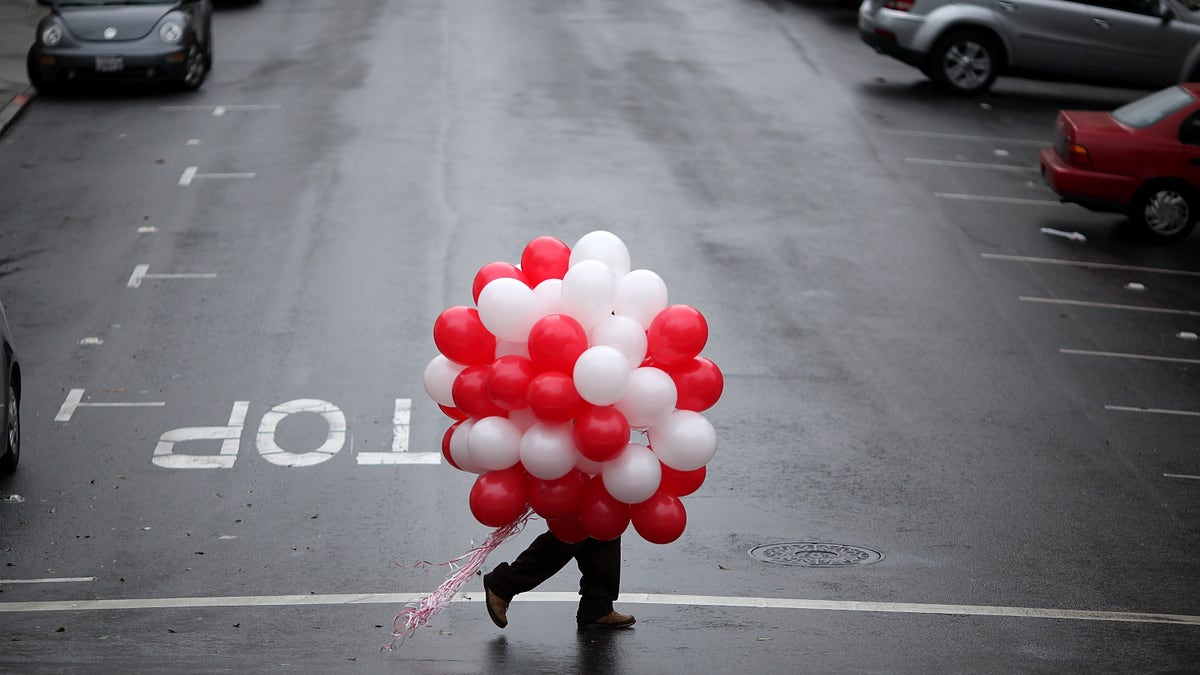Every year for Valentine's Day, lovers around the world pull out all the stops for their sweethearts.
From traditional flowers or chocolate to more expensive gifts such as diamonds, the holiday is just as much about spending hard-earned cash as it is about love.
"Valentine’s Day is returning to its romantic traditions, with total spending on significant others for the holiday expected to reach a record $14.2 billion in 2024," according to the annual survey released by the National Retail Federation and Prosper Insights & Analytics.
VALENTINE'S DAY: DO YOU KNOW THE ORIGINS OF THE HOLIDAY?
Valentine's Day consumer spending this year is projected to surpass the holiday's second-highest historical expenditure, reaching a record-breaking $25.8 billion, according to data from the National Retail Federation (NRF).
This anticipated increase by $1.9 billion over the spending of $23.9 billion in a recent prior year marks a significant upswing in Valentine's Day consumerism.
So, if you’re feeling the pressure to get your significant other the perfect gift for V-Day, it’s likely because the commercialization of the holiday is by capitalist design.

Red roses are often given to loved ones on Valentine's Day. (Christopher Furlong/Getty Images)
Is Valentine's Day materialistic?
Whether one perceives Valentine's Day as materialistic depends on personal beliefs and values.
Some may choose to celebrate the day with meaningful, non-material gestures, while others may embrace the tradition of exchanging gifts as a way to express love. The key lies in striking a balance between material expressions and the emotional essence of the celebration.
The economic aspects surrounding holidays like Valentine's Day draw the focus away from human relationships, possibly weakening other forms of social interaction, according to Forbes.
So, while Valentine’s Day may be a traditional holiday of romance, there’s nothing accidental about its tendency to hit your pockets.
What are the origins of Valentine's Day?
There is much speculation and mystery over the true identity of St. Valentine and the holiday's exact origins, but it appears to be a combination of Christian and some pagan traditions.
The Roman Catholic Church recognizes different Christian martyrs who were executed while trying to practice their faith or helping persecuted prisoners.
In one legend, Valentine acts as a priest in ancient Rome, performing marriage in secret for young lovers after Emperor Claudius II barred young men from marrying in the city so that they would stay in his army, according to History.com.
After Valentine's actions were discovered, he was sentenced to death and beheaded by the emperor.
Another legend suggests that Valentine was imprisoned for his beliefs and sent a letter to a young girl signed "from your Valentine," inspiring the tradition of sending love notes on this day, notes History.com.
While the exact details behind the identity of the individual are mysterious and lack concrete historical records, most stories concerning the holiday's namesake seek to portray him as a romantic and heroic figure during the Christian persecution by the Romans.

Valentine's Day has evolved into a celebration of love and affection marked by the exchange of cards, flowers and tokens of affection. (Justin Sullivan/Getty Images)
Why do we celebrate Valentine's Day?
The association of Valentine's Day with romantic love can be traced back to the Middle Ages when the notion of courtly love flourished. Over time, the day evolved into a celebration of love and affection marked by the exchange of cards, flowers and tokens of affection.
Today, it is a widely celebrated and commercialized occasion for expressing love and appreciation.
VALENTINE'S DAY QUIZ! HOW WELL DO YOU KNOW THESE FACTS ABOUT THE ANNUAL DAY OF LOVE?
The modern Valentine's Day became more popular in Great Britain during the 17th century, with the tradition of written letters to emphasize an individual's affection for a lover. The printing technology that emerged at the dawn of the 20th century helped to popularize its influence across the English-speaking world.
However, the origins of how Valentine’s Day became a major commercial holiday apparently can be traced to the United States.
While the practice of gifting your Valentine greeting cards was a centuries-long tradition in England, where the holiday was birthed, it was not until Valentine’s Day was "rejuvenated" stateside in the mid-19th century that it saw its commercial boom, according to the Library of Congress.
5 HOMEMADE VALENTINE'S DAY DINNER RECIPE IDEAS
At first, the Old World celebration was "often forgotten" and "easily neglected" by those in the U.S. Things took a turn in the 1840s when the holiday was transformed into something "not-to-be-missed," author Leigh Eric Schmidt wrote in the 1995 book, "Consumer Rites: The Buying & Selling of American Holidays."
Merchants outside the card industry, such as jewelers, florists and confectioners, eventually joined the bandwagon.

Valentine’s Day may be a traditional holiday about romance, but there’s nothing accidental about its tendency to hit your pockets. (iStock)
CLICK HERE TO SIGN UP FOR OUR LIFESTYLE NEWSLETTER
"When merchants rediscovered the [holiday], the former transformed the latter, not vice versa, as merchants systematically extended the apparatus of the market into the realm of celebration," Schmidt wrote.
However, while companies did not create the holiday and some of its traditions, they certainly capitalized on it. The most popular shopping destination last year was the online marketplace, visited by 41% of all Valentine's shoppers, followed by department stores (33%), discount stores (31%) and florists (17%), according to the NRF.
CLICK HERE TO GET THE FOX NEWS APP
Candy (57%), greeting cards (40%), flowers (39%), an evening out (32%) and jewelry (22%) remain some of the most popular purchases.
Philip Nieto and Kerren Keith Gaynor contributed to this article.
For more Lifestyle articles, visit www.foxnews.com/lifestyle.

